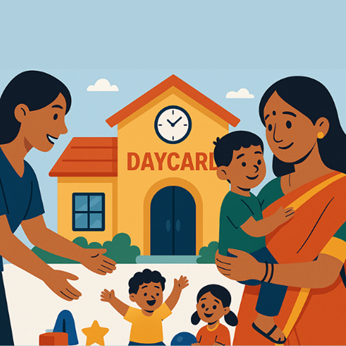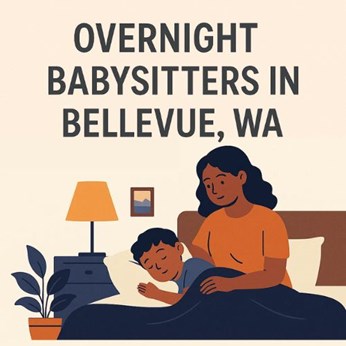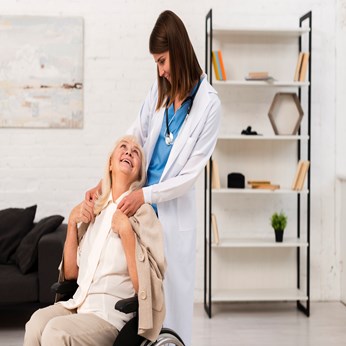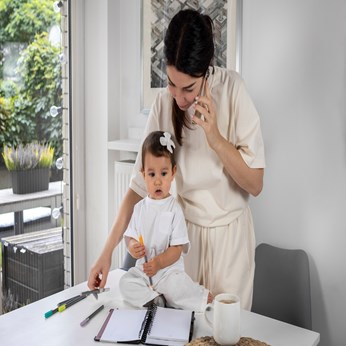Know About Being A Caregiver For An Elderly Family Member
I just read a very interesting news item that by the year 2040 more than 22.6 % of the US population would be elders; this calls for the need for caregivers to look after the graying population. You may be obliged to take up the responsibility of an elder, with being a caregiver meaning that you should communicate the need to your family and your elderly family member can help you plan and give care without hurt feelings or resistance.
Following the following steps would help you be a caregiver for an elderly family member:
Step 1:
The first essential step is to arrange for a time and place to meet the rest of the family to discuss the necessity of care for your elderly family member. You could identify their concerns about the elderly family member regarding care, such as memory loss, physical injury or the need for companionship. This would give you the assurance and blessings of the other family members before you assume the role.
Step 2:
The next step is to talk to the elderly family member and make a proposition for care; ensure that you share your feelings and also let them know that you love him/her and also want one to be safe. It would help to ask their opinion regarding the extent of care and then make a care schedule that will work for both of you. If the elder shows some resistance it would help to work around and come up with a solution you're both happy with, like part-time hospice care or a daily check-in.
It is advisable to talk to the elderly family member about their living will, power of attorney to make sure that all legal issues are taken care of before you assume care. This will ensure that your family member's wishes are carried out satisfactorily, and you have the authority to make decisions on behalf of your charge.
Step 3:
Next ensure that you take the necessary training to take care of the medical needs of the elder before you assume charge. Such training could be basic training in CPR and caring methods, taught at local hospitals or community centers; this will help you feel confident while handling the role.

Step 4:
Do your job well and establish your role as a caregiver; give your family members updates of how it is going on and the elderly family member is faring. Make the lifestyle changes by arranging your schedule, moving into their home or arranging for substitute care when you are not able.
Step 5:
Make it to habit to accompany your elderly family member to doctor’s appointments and ask questions about the need for medical care, medications and treatment. Also know from him/her the warning signs of a problem so that you can call and take help in an emergency. Ascertain and ensure that the elder has health insurance or Medicare in place.
Step 6:
Being a caregiver for an elderly family member can be both physically and emotionally draining, so take help whenever needed. If you work too hard you will be left with resent for your family members; let other family members help and you could look into respite care so you can take a break when you need it.
Image Courtesy: Google
Take the next step toward your goals
Share your requirement and find the best care providers in your area
-
Looking for a caretaker’s job? Build your profile and get in touch with families in your vicinity.
-
Discover nannies, babysitters, cooks, housekeepers, pet sitters, and elder care under one roof.
-
Get all the support you need to run a successful care center.
-
Search for appropriate centers near you depending on your needs.
Care Corner Insights: Blog Library

Daycare Admissions in Cary, NC for New NRI Families: Documents, Health Records, and Start Dates
Moving to a new country is exciting but also comes with many responsibilities—especially when it comes to finding the right daycare for your little one. For new NRI (Non-Resident Indian) families settling in Cary, NC, understanding the daycare

Overnight Babysitters in Bellevue, WA for Business-Travelling NRI Parents: Safety & Policies
For many NRI parents living in Bellevue, WA, frequent business trips are a reality. While traveling, one of the biggest concerns is ensuring your children are safe, cared for, and emotionally supported during overnight stays. Overnight babysitters ca

Indian Home-Style Cooks in Queens, NY: Tiffin-Style Weekly Meal Prep from Your Kitchen
Queens, NY, is home to one of the most diverse food cultures in the country, and Indian cuisine holds a special place among families looking for authentic, comforting meals. While restaurant takeout is convenient, nothing compares to the taste and nu

Baby Sleep Problems: What is Sleep Regression and How to Handle It
If you’re a parent, you know that baby sleep is one of the greatest mysteries of life. One day your little one is snoozing like an angel, and the next day they’re suddenly waking up every hour, fussing, or refusing to nap. Before you panic, there’s a

What is Validation Therapy? A New Approach to Dementia Care
Caring for loved ones with dementia is one of the most emotionally challenging journeys a family can face. Traditional methods often focus on correcting memory lapses or redirecting confused thoughts—but that can sometimes lead to frustration, stress

What is a Part-Time Nanny and Do You Need One
Parenting is a beautiful journey, but let’s be honest—it can also be exhausting! Between work deadlines, household chores, and family responsibilities, sometimes there just aren’t enough hours in a day. That’s where part-time nannies step in, offerin

Part-Time Housekeeper Hiring in Alpharetta, GA: Weekly Schedules, Pricing, and Must-Do Tasks
Keeping a home spotless while balancing work, family, and personal commitments can be overwhelming. For families and professionals in Alpharetta, GA, hiring a part-time housekeeper is one of the most practical solutions. Whether you need help once a

Affordable Daycares in Irving, TX with Indian Menu Options: Parent Reviews & Enrollment Tips
Finding the right daycare for your little one is never an easy decision—especially if you’re looking for one that fits your budget and offers familiar food options like an Indian-inspired menu. For parents in Irving, TX, the good news is that several

Can Babies Sleep on Their Side? Tips for Safe Baby Sleep
When it comes to newborns, every parent worries about the smallest details—how they sleep, what they wear, even which way they turn their tiny heads. One common question that pops up is: “Can babies sleep on their side?” The short answer? Not recom

8 Benefits of Hiring a House Cleaner for Your Home
Let’s be honest — keeping a home sparkling clean while juggling work, family, and daily life can feel like a full-time job in itself. That’s where professional house cleaners step in, turning the chaos into calm. If you’ve been debating whether to br